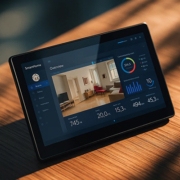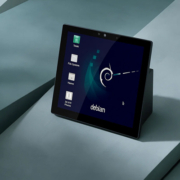How to Install a Smart Home Dashboard on Debian
As smart homes become more integrated and complex, having a centralized smart home dashboard is essential for monitoring and controlling your devices. If you’re using Debian Linux, you’re in luck—Debian is a stable and secure operating system perfect for hosting a home automation dashboard.
In this guide, we’ll walk through how to install a smart home dashboard on Debian, from preparing the environment to choosing the right platform and getting everything up and running.
Why Install a Smart Home Dashboard on Debian?
Debian is known for its rock-solid stability, strong security policies, and extensive software repositories. It’s an excellent choice for running a self-hosted smart home control panel because:
- It’s lightweight and runs well on Raspberry Pi or older PCs.
- It provides long-term support and security updates.
- It’s compatible with popular automation tools like Home Assistant, OpenHAB, and Node-RED.
Step-by-Step Guide to Installing a Smart Home Dashboard on Debian
We’ll use Home Assistant as the example dashboard in this tutorial, but the process can be adapted for other platforms like OpenHAB, Domoticz, or Node-RED.
Step 1: Update Your Debian System
Open your terminal and run:
sudo apt update && sudo apt upgrade -y
This ensures all your packages are up to date.
Step 2: Install Required Dependencies
Install Python, pip, and other required libraries:
sudo apt install -y python3 python3-pip python3-venv
sudo apt install -y libffi-dev libssl-dev libjpeg-dev zlib1g-dev autoconf build-essential
These packages are necessary for compiling Home Assistant and supporting integrations.
Step 3: Create a New User for Home Assistant
For security, create a separate user to run Home Assistant:
sudo useradd -rm homeassistant -G dialout,gpio,i2c
Switch to this new user:
sudo -u homeassistant -H -s
Step 4: Create and Activate a Virtual Environment
cd /srv
sudo mkdir homeassistant
sudo chown homeassistant:homeassistant homeassistant
cd homeassistant
python3 -m venv .
source bin/activate
Now you’re inside the virtual environment.
Step 5: Install Home Assistant Core
Run the following inside the virtual environment:
pip install wheel
pip install homeassistant
Once installed, start Home Assistant for the first time:
hass
It may take a few minutes to initialize. The dashboard will be accessible at:
http://localhost:8123
or
http://<your-debian-ip>:8123
Optional: Set Up Home Assistant as a System Service
To automatically run Home Assistant on boot, create a systemd service.
Exit the virtual environment and switch back to your main user:
deactivate
exit
Create the service file:
sudo nano /etc/systemd/system/home-assistant@homeassistant.service
Paste the following:
[Unit]
Description=Home Assistant
After=network-online.target
[Service]
Type=simple
User=homeassistant
ExecStart=/srv/homeassistant/bin/hass -c “/home/homeassistant/.homeassistant”
[Install]
WantedBy=multi-user.target
Enable and start the service:
sudo systemctl daemon-reexec
sudo systemctl enable home-assistant@homeassistant
sudo systemctl start home-assistant@homeassistant
Recommended Add-ons for Smart Home Dashboards
Once Home Assistant is running, enhance your smart home dashboard with integrations like:
- Zigbee2MQTT for Zigbee device control
- ESPHome for custom ESP32/ESP8266 devices
- Google Assistant or Alexa integrations
- Energy Monitoring dashboards
- Portworld Smart Control Panels integration for touch panel control
-
Tip: Portworld’s Android-based smart control panels can display your Debian-hosted dashboard via a web app or embedded iframe for real-time control.
- Troubleshooting Tips
- Port 8123 not reachable? Check your firewall settings with
sudo ufw allow 8123. - Slow interface? Check memory usage with
htopor increase RAM if using a Raspberry Pi. - No internet on boot? Ensure
network-online.targetis correctly configured in your service file.










